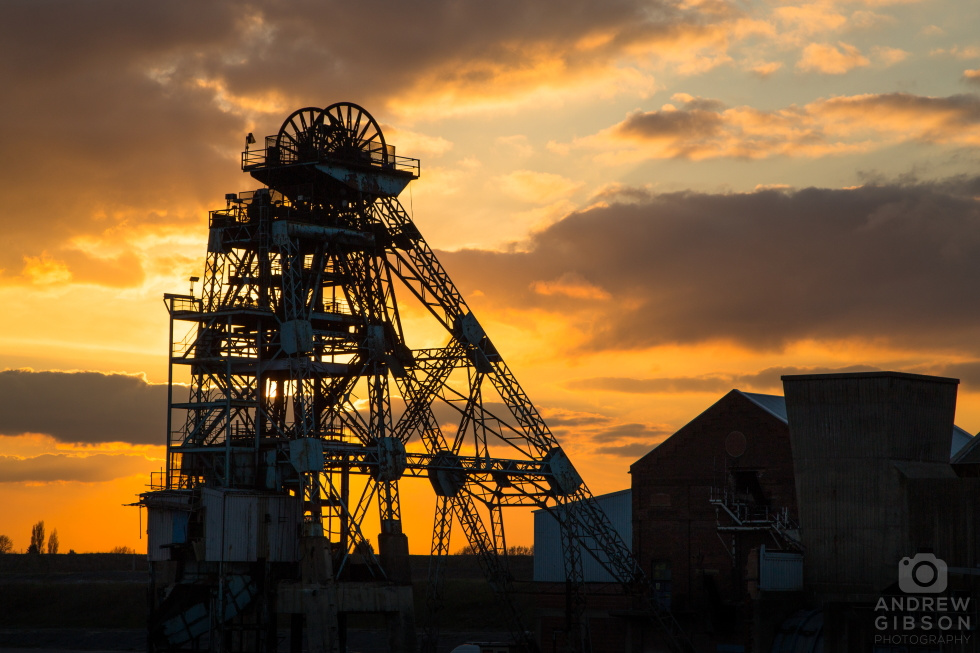As a sometime urban explorer one of my favourite places to visit and photograph are collieries, the once omnipresent vision of industrial Britain now relegated to the past.
Hatfield’s history is one that stretches over a century – almost. It closed for good in 2015 after 99 years of coal production, save for a few in the early 21st century when it sat mothballed, and was one of the last to close for good when it did. Thoresby outlived it by a few days and Kellingley just a few months, when its – some would argue – untimely demise marked the end of deep coal mining in a country whose industrial prowess had been built on the black stuff.
For a third of that time its biggest customer was the neighbouring Thorpe Marsh Power Station, a place I visited many times while it sat in its twilight state until it was no more, but Hatfield managed to continue production for over twenty years after that had closed. Its first closure came just months before Thorpe Marsh’s, in December 1993, but it was reopened following a management buyout that managed to turn a £2.4 million profit in its first year. Sadly its success wasn’t blessed with longevity and the operation closed in 2001, only restarting in 2007 under new ownership.
Today of course there just isn’t the demand for coal there once was and clean green energy is the watch word du jour – and has been for some decades now. But the demise of this industry weakens our national history, the destruction of such iconic structures as headstocks and cooling towers removing local identities and waymarkers in the process.
Stainforth had a strange vibe to it when I arrived at the end of a nice sunny day out with my old friend David on Saturday evening, a community that seemed to be stuck in limbo without the activity of the site that placed it on the map. With a degree of unease we crossed the wasteland that was once its entrance roads, crested a hill and looked down on what was left.
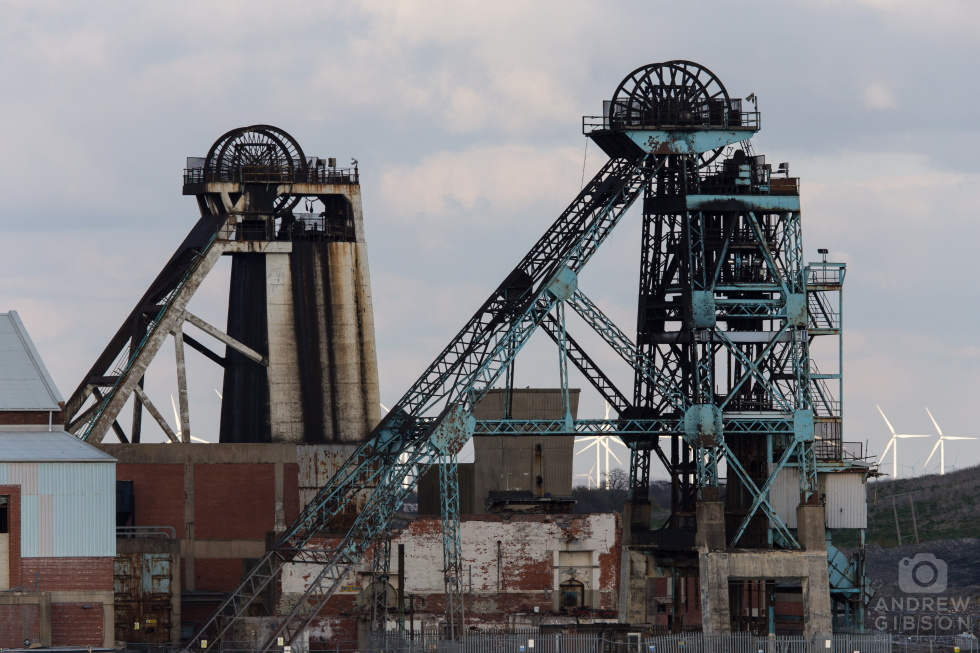
The upcast (far) and downcast (near) headstocks were listed by English Heritage as it was believed they provided rare examples of internal lattice structures, but the council’s own survey now reports that they are more common than thought and therefore less significant – placing a threat over their survival. The fact that they even still exist makes them rare enough these days…
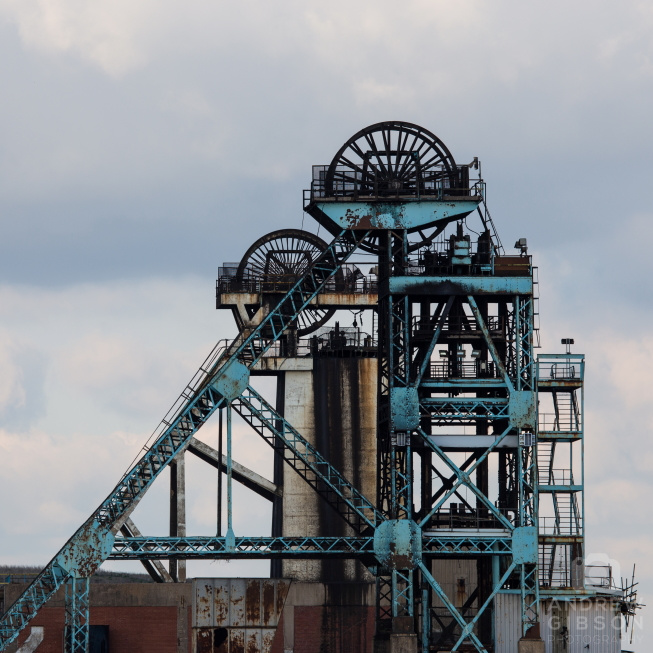
A cacophony of barking rang round the huge site, menacing guard dogs visible in the distance behind the herras fencing, but we edged around the spoil and under the remains of the coal prep plant.
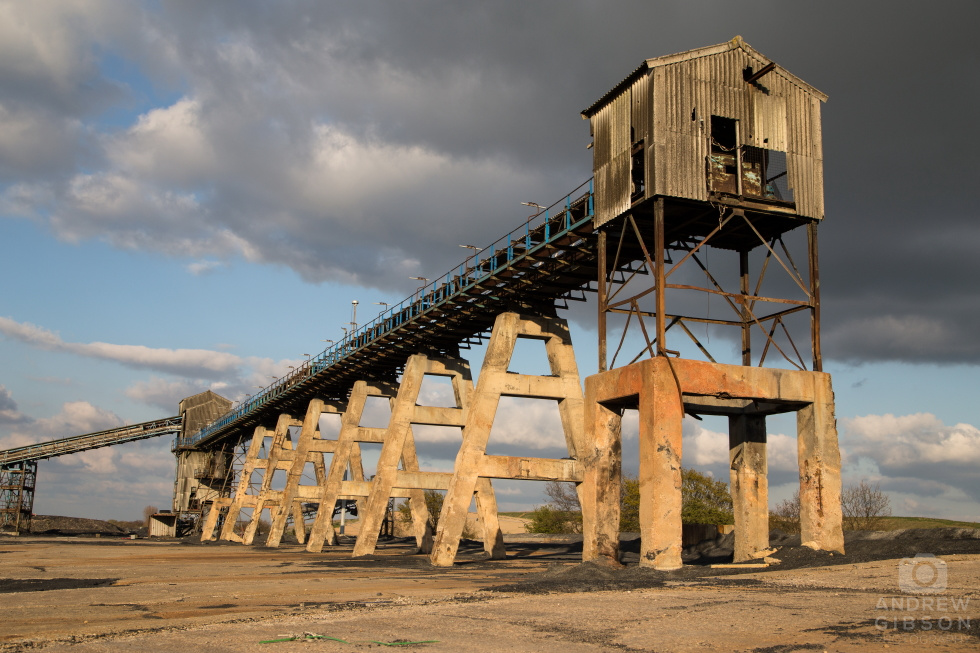
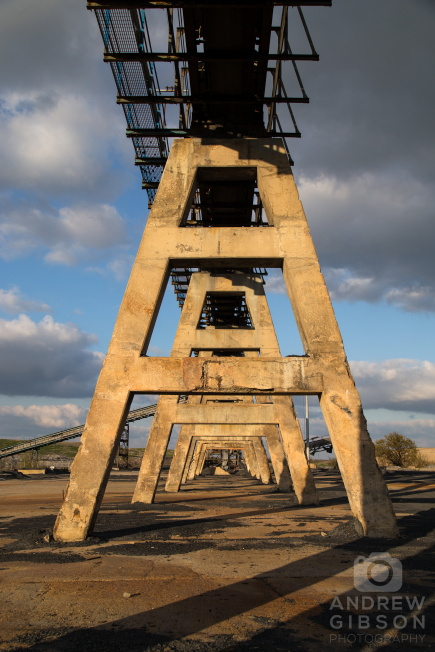
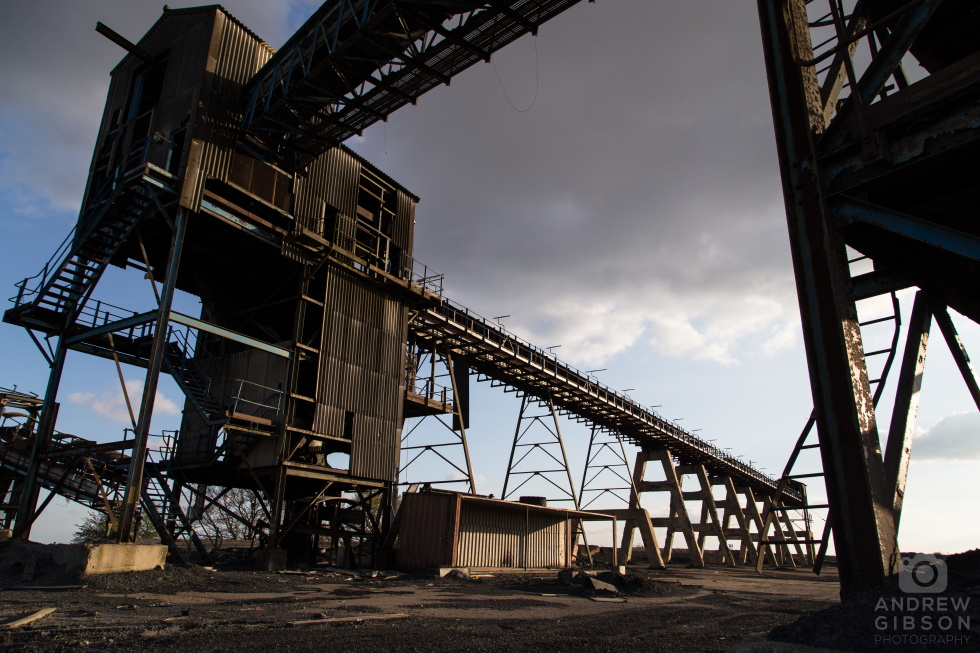
The setting sun began to cast a warm yellow glow on the concrete supports as we made our way further round, at ease for the fact that this side of the fence we were clearly on safe ground, less at ease for the group of local teenagers that had just marched brazenly through it and past us with scant regard for civil decency.
The downcast headstock slid in to a natural frame of the concrete supports perfectly:

After taking in our surroundings we left briefly to buy some crisps for later to go with the craft beers that were waiting in the fridge back home. Watching the sky turn a fiery yellow in the car park of the local shopping precinct, we then went back to capture the sunset shot (main image) and enjoy the silence the once thriving site now offered.
Well, had the dogs not been barking a little too close for comfort still…
It’s a shame the cooling towers aren’t still there in the background, an era-defining shot I’d dearly loved to have taken. But if you missed them you can always read about that particular adventure here.
